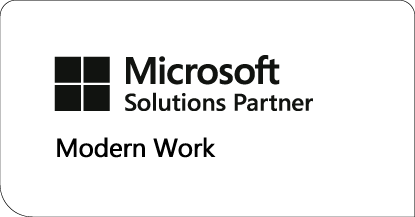Cloud Data Backup / Dr
Azure Backup
A centralized backup service and solution to help protect against ransomware
Azure Backup is a cost-effective, secure, one-click backup solution that’s scalable based on your backup storage needs. The centralized management interface makes it easy to define backup policies and protect a wide range of enterprise workloads, including Azure Virtual Machines, SQL and SAP databases, and Azure file shares.
Centralized
management
Monitor, operate, govern, and optimize data protection at scale in a unified and consistent manner using Backup Center.
Application
consistency
Back up and restore data from virtual machines with application consistency in Windows using Volume Shadow Copy Service (VSS) and in Linux with pre- and post- processing scripts.
Multiple-workload support
Back up Azure Virtual Machines, on-premises servers, SQL Server and SAP HANA on Azure Virtual Machines, Azure Files, and Azure Database for PostgreSQL.
Durable storage
options
Store backups in locally redundant storage (LRS), geo-redundant storage (GRS), and zone-redundant storage (ZRS).
Manage backup data at scale
- Manage and monitor your entire backup estate from a central console with Backup center.
- Stay compliant by enforcing backups at scale with Azure Policy.
- Audit and analyze backup data using the historical data and patterns shown in Backup reports.
- Use APIs, PowerShell, and Azure CLI to automate backup policy and security configurations.
- Export cloud backup data to your own monitoring systems in a secure and performant manner.
Secure your backups
- Grant fine-grained access to users for specific backup operations using role-based access control (RBAC).
- Prevent accidental data loss by retaining backups for 14 days after deletion with soft delete.
- Protect data against ransomware attacks by enabling multiple-user authentication as an additional layer of authorization for critical operations.
- Fully control how to protect and access your data with customer-managed keys that use 256-bit AES encryption.
- Enable secure transfer of backups to Azure Backup storage with private endpoints.
- Ensure availability with zone- and geo-redundant storage and the ability to restore backups from a paired region at any time.
Reduce costs
- Eliminate extra costs of additional backup infrastructure and overhead for scaling and managing storage.
- Optimize backup cost with patterns and insights under Backup reports to right-size your backup storage.
- Send recovery points to the archive tier for significant savings in storage costs and compliance with your long-term retention needs.
- Selectively back up disks within an Azure Virtual Machine to customize your backup solution and reduce storage costs.
- Estimate precise costs with the Backup pricing estimator.
Protect a diverse set of workloads
- Back up all your infrastructure, databases, and storage workloads with ease from a central location.
- Get application-consistent snapshots of Azure Virtual Machines running on both Windows and Linux.
- Protect mission-critical infrastructure-as-a-service (IaaS) and platform-as-a-service (PaaS) databases such as SQL Server and SAP HANA in Azure Virtual Machines as well as Azure Database for PostgreSQL.
- Generate agentless crash-consistent snapshots of Azure Disks.
- Safeguard against data loss with Azure Files and Azure Blob Storage.
Key benefits
Some of the key benefits of Backup center include:
Single pane of glass to manage backup
Backup center is designed to function well across a large and distributed Azure environment. You can use Backup center to efficiently manage backups spanning multiple workload types, vaults, subscriptions, regions, and Azure Lighthouse tenants.
Datasource-centric management
Backup center provides views and filters that are centered on the datasources that you're backing up (for example, VMs and databases). This allows a resource owner or a backup admin to monitor and operate backups of items without needing to focus on which vault an item is backed up to. A key feature of this design is the ability to filter views by datasource-specific properties, such as datasource subscription, datasource resource group, and datasource tags. For example, if your organization follows a practice of assigning different tags to VMs belonging to different departments, you can use Backup center to filter backup information based on the tags of the underlying VMs being backed up without needing to focus on the tag of the vault.
Connected experiences
Backup center provides native integrations to existing Azure services that enable management at scale. For example, Backup center uses the Azure Policy experience to help you govern your backups. It also leverages Azure workbooks and Azure Monitor Logs to help you view detailed reports on backups. So, you don't need to learn any new principles to use the varied features that the Backup center offers. You can also discover community resources from the Backup center.
At-scale monitoring capabilities
Backup center now provides at-scale monitoring capabilities that help you to view replicated items and jobs across all vaults and manage them across subscriptions, resource groups, and regions from a single view for Azure Site Recovery.




